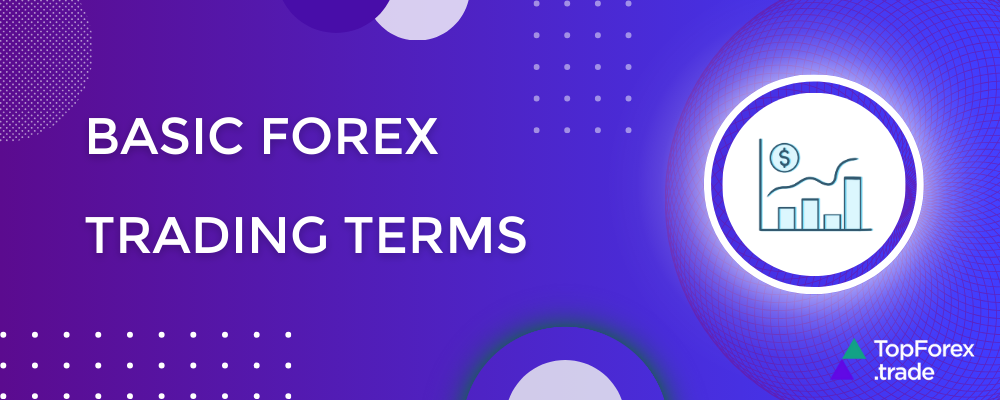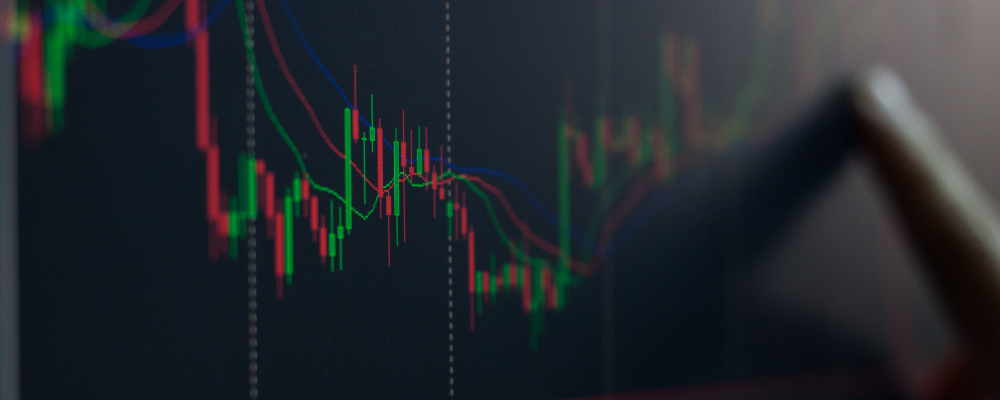Major Forex market concepts: essential terms every trader should know

In the world of Forex trading, it is of utmost importance to grasp the foundational concepts that influence and guide trading decisions. Whether you’re delving into the vast expanse of the Forex market or exploring other financial instruments, a firm grasp of fundamental and technical analysis, the significance of indicators, the role of limits, and the strategies behind long-short trading is paramount.
The global financial landscape is a symphony of interconnected markets, each with unique rhythm and nuances. Beyond Forex, where currencies dance to economic indicators and geopolitical shifts, other instruments like stocks, commodities, and indices follow their own rules. This article is your comprehensive guide to navigating this diverse terrain, shedding light on the fundamental principles that transcend specific markets.
Basic Forex market concepts

Let’s meticulously unpack the key elements that not only shape trading decisions in the realm of Forex but also lay the groundwork for navigating a diverse array of financial instruments.
Currency pairs
Currencies are traded in pairs, where one currency is exchanged for another. The pair consists of a base currency and a quote currency, and the exchange rate indicates the amount of quote currency required to purchase one unit of the base currency. For instance, in the EUR/USD pair, if the exchange rate is 1.1200, it means 1 Euro can be exchanged for 1.1200 US Dollars.
Bid and ask prices in Forex trading
The bid price is the highest amount a buyer is willing to pay, while the ask price is the lowest amount a seller is willing to accept. The difference between these prices is known as the spread. In practical terms, if the EUR/USD has a bid price of 1.1200 and the ask price of 1.1205, a trader can sell at 1.1200 and buy at 1.1205.
Leverage in Forex trading
Leverage allows traders to control larger positions with a smaller amount of capital. For example, with 50:1 leverage, a trader can control a position worth $50,000 with just a $1,000 investment. While leverage can amplify profits, it also increases the risk of significant losses.
Pips in Forex trading
A pip, or percentage in point, is the smallest unit of measurement for the change in value between two currencies. Most currency pairs are quoted to four decimal places. If the USD/JPY moves from 110.50 to 110.51, it has moved one pip.
Long and short positions in Forex trading
Going long involves buying a currency pair with the expectation that its value will rise while going short involves selling with the anticipation that the value will fall. For instance, going long on EUR/USD at 1.1200 means expecting the Euro to strengthen against the US Dollar.
Margin and margin calls in Forex trading

Margin is the amount of money required to open and maintain a leveraged position. If losses reduce an account’s equity close to the margin requirement, a margin call may be issued, requiring the trader to either deposit more funds or close positions.
Consider a trader with $1,000 in their account employing 10:1 leverage, allowing them to control a position size of $10,000. Opting to go long on the EUR/USD at an exchange rate of 1.1200, the trader opens a position worth $10,000.
In the dynamic Forex market, price fluctuations can lead to losses. If the market moves unfavorably, resulting in an $800 loss, the trader’s remaining equity dwindles to $200 (initial $1,000 – $800). As this approaches the margin call level set at $150, a margin call is triggered.
Fundamental analysis in Forex trading
Fundamental analysis involves evaluating economic indicators, interest rates, geopolitical events, and other factors that can influence a country’s currency value. For example, positive employment data in the U.S. might lead to a stronger USD against other currencies.
Technical analysis in Forex trading
Traders use charts, patterns, and technical indicators to analyze historical price data and identify potential future price movements. A trader might use a moving average crossover on a chart to signal a potential change in trend direction.
Risk management in Forex trading
FX risk management involves implementing strategies to protect capital, including setting stop-loss orders to limit potential losses and take-profit orders to secure profits at predefined levels.
Setting stop-loss orders: The trader, anticipating potential market fluctuations, strategically places a stop-loss order at 1.3050. This preemptive measure ensures that if the market moves unfavorably, and the GBP/USD hits 1.3050, the position automatically closes, limiting potential losses.
Take-profit orders: Simultaneously, the trader institutes a take-profit order at 1.3200. This serves as a predetermined exit point where the position automatically closes, securing profits amidst favorable market movements.
Market and limit orders in Forex trading

A market order is an instruction to buy or sell a currency pair at the current market price, while a limit order is an instruction to buy or sell at a specified price or better.
Market order: Suppose a trader is closely monitoring the EUR/USD currency pair and decides to execute a market order. The current market price for the EUR/USD is 1.1250. By placing a market order, the trader instructs the platform to buy or sell the currency pair immediately at the prevailing market rate of 1.1250. This ensures swift execution, capturing the best available price in the current market conditions.
Limit order: Now, imagine the same trader wants to be more strategic. Instead of entering the market at the current rate, they decide to set a limit order. The current market price is 1.1250, but the trader specifies a buying limit of 1.1200. This means that the trader is willing to buy the EUR/USD, but only if the price reaches 1.1200 or lower. The limit order provides a more controlled approach, allowing the trader to enter the market at a price deemed more favorable.
Beyond Forex, these concepts seamlessly extend into other financial instruments:
- Stock trading: Ownership in a company, with prices influenced by earnings reports, market sentiment, and economic conditions.
- Commodities trading: Physical goods like gold and oil, with prices driven by factors such as supply and demand dynamics and geopolitical events.
- Indices trading: Reflect the performance of a group of stocks. The S&P 500, for instance, provides insights into broader market trends.
- Bonds trading: Debt securities are influenced by interest rates and the creditworthiness of the issuer.
- Forex derivatives: Financial contracts deriving value from an underlying asset. Futures and options are prominent examples.
Top Forex brokers to start trading
As the Forex landscape expands, choosing the right broker becomes pivotal for traders seeking a solid foundation. In this curated list, we present some of the top Forex brokers renowned for their comprehensive educational resources. These brokers go beyond providing a trading platform; they empower traders with the knowledge and insights needed to navigate the complexities of the Forex market.
BlackBull FX trading
BlackBull emerges as a highly esteemed online Forex broker, gaining the confidence of traders who seek a dependable platform. The company takes pride in its extensive array of trading instruments, covering commodities, currency pairs, stocks, futures, indices, and popular Cryptocurrencies, granting traders genuine access to stocks.
Functioning as a financial services entity regulated in Seychelles, BlackBull places utmost importance on the safety of its traders across all operational aspects. The broker offers a comprehensive range of account options to cater to diverse preferences, including standard, prime, institutional, and Islamic (no swap) accounts. For those aspiring to refine their skills in a risk-free setting, a demo account is also at their disposal.
BlackBull distinguishes itself by providing adaptable trading platforms, featuring popular choices like MT4, MT5, cTrader, Web Trader, and TradingView. The trading experience is further enhanced with dedicated platforms such as BlackBull CopyTrader and BlackBull Shares, complemented by mobile and tablet apps, ensuring flexibility and accessibility.
Recognizing the significance of trader education, BlackBull is committed to empowering its users through various resources. The broker offers an educational hub, along with webinars and tutorials on its website, delivering valuable knowledge to traders.
With customer support available 24/7 through email, phone, or chat, BlackBull underscores its dedication to ensuring assistance is readily accessible at any given time.
XTB FX trading
XTB, a well-established European brokerage, has gained recognition for its excellence in providing Forex and CFD (Contract for Difference) trading services. As one of the largest FX & CFD brokers listed on stock exchanges worldwide, XTB serves clients in more than 190 countries.
Emphasizing financial security and transparency, XTB subjects itself to rigorous regulation by esteemed financial authorities, including the FCA (Financial Conduct Authority) in the UK, CySEC (Cyprus Securities and Exchange Commission), and KNF (Polish Financial Supervision Authority). This commitment to regulatory oversight ensures a reliable trading environment, fostering confidence among traders and investors.
XTB’s extensive offering encompasses over 1500 CFDs across diverse asset classes, including forex currency pairs, indices, commodities, shares, and cryptocurrencies. This broad range empowers traders to diversify their portfolios and explore different markets, catering to various investment preferences.
Traders enjoy user-friendly trading platforms, notably the proprietary xStation and the popular MetaTrader 4 (MT4). These platforms are equipped with advanced charting tools, technical indicators, and real-time market data, facilitating well-informed decision-making. XTB provides various account types, such as the Standard account and swap-free options, each tailored to specific features and fee structures to accommodate different trading styles.
In addition to its robust trading infrastructure, XTB offers a variety of research and analysis tools, including daily market analysis, economic calendars, and webinars. These resources provide valuable insights, enabling traders to stay informed about market trends and significant news events.
eToro FX trading
eToro, a prominent Social trading and investment platform, has transformed the financial landscape through its user-friendly features and emphasis on social interaction. Its mission is to make trading enjoyable and accessible to all, offering a diverse array of financial instruments, such as currency pairs, stocks, Cryptocurrencies, commodities, and indices.
One notable feature of eToro is its Social trading capability, enabling users to connect with a global community of traders. The platform’s mobile app, compatible with both iOS and Android, provides a seamless on-the-go trading experience with an intuitive interface.
eToro ensures users stay informed about market movements by delivering real-time market data, including live quotes and charts. The app also provides advanced trading tools, such as technical indicators and drawing tools, facilitating in-depth analysis. For investment management, eToro offers portfolio tools and introduces CopyTrader, allowing users to replicate trades from successful investors. This feature makes eToro an ideal choice for those new to trading or those who prefer a passive approach.
Exness FX trading
Exness is a well-regarded online Forex broker that provides a diverse range of trading instruments, encompassing currency pairs, commodities, indices, and Cryptocurrencies.
A notable characteristic of Exness is its unwavering commitment to regulatory compliance. The broker operates under the regulation of esteemed financial authorities such as the Financial Conduct Authority (FCA) in the UK and the Cyprus Securities and Exchange Commission (CySEC) in Cyprus. These regulatory bodies oversee its operations, establishing a foundation of trust and security for traders.
Competitive spreads are a standout feature of Exness, with the broker offering tight spreads. The extent of spread variations depends on the selected account type, which includes Standard and Professional accounts, each with its unique features and conditions.
Exness ensures accessible customer support through various channels, including email, live chat, and phone support.
Traders utilizing Exness can leverage popular trading platforms such as MetaTrader 4 (MT4) and MetaTrader 5 (MT5). Renowned for their user-friendly interfaces, advanced charting tools, and diverse order types, these platforms contribute to a seamless and efficient trading experience.
Plus500 FX trading
Since 2008, Plus500 has established itself as a major online broker, specializing in providing CFD trading services for a wide range of assets, including shares, currency pairs, precious metals, commodities, oil and gas, and indices.
The platform offers two types of accounts: real and demo. The demo account is unlimited in terms of usage, allowing traders to practice new strategies, explore unfamiliar tools, and test advisers.
Plus500 eliminates the need for software downloads, utilizing Web Trader for both Windows and macOS, along with mobile versions for smartphones and tablets. The web version stands out with its unique design and functionality, offering a comprehensive suite of analysis and forecasting tools. On the platform’s main screen, users can choose instruments and indicators, access news, and utilize the economic calendar.
Operating globally, Plus500 is regulated by multiple authorities, including the FCA (UK), CySEC (Cyprus), SFSA (Seychelles), AFSL issued by ASIC, FSP issued by FMA (New Zealand), MAS (Singapore), and holds an authorized financial services provider license issued by FSCA (South Africa).
79% of retail investor accounts lose money when trading CFDs with this provider. You should consider whether you can afford to take the high risk of losing your money.
Plus500EE AS is authorised and regulated by the Estonian Financial Supervision and Resolution Authority (Licence No. 4.1-1/18).
Related articles:
- How to start Forex trading and enter the exchange: 10 steps to your first deal with an online broker
Basic Forex market concepts - FAQ